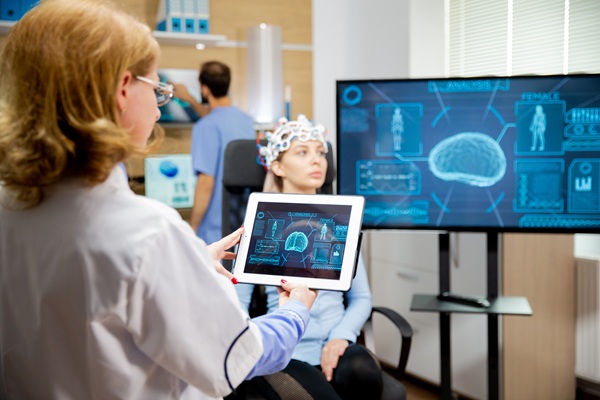 TMS, which stands for transcranial magnetic stimulation, is an alternative treatment option for severe or treatment-resistant depression. It has been approved by the Federal Food and Drug Administration for the treatment of depression. This article covers everything you need to know about TMS therapy.
TMS, which stands for transcranial magnetic stimulation, is an alternative treatment option for severe or treatment-resistant depression. It has been approved by the Federal Food and Drug Administration for the treatment of depression. This article covers everything you need to know about TMS therapy.
An overview of TMS therapy for depression
TMS therapy is a noninvasive kind of brain stimulation utilized when conventional therapies, such as antidepressants and psychotherapy, have failed to help a patient suffering from depression. The therapy is provided via a device that produces laser-targeted, regulated magnetic fields.
An electromagnetic coil is placed over a brain region believed to be implicated in depression. The coils produce repetitive magnetic fields that generate electrical activity in nerve cells to stimulate the target region and adjacent brain areas.
Treatment sessions are usually 30 to 40 minutes long, although they might be shorter or longer. Most patients have sessions five days a week for four to six weeks, with some staying on for a few more weeks to taper off.
What to expect during a TMS treatment
TMS therapy is normally performed by a TMS technician, who ascertains the patient's initial motor threshold in the first session. They do this by providing many short pulses and calculating the least amount of power required to cause the patient's thumb to twitch. The motor threshold is used to customize treatment settings and determine how much energy is required to stimulate the brain cells.
Once the coil has been fitted based on all of the patient's measurements, treatment may begin. Patients may hear and feel loud clicking noises as well as tapping sensations. Patients may notice improvements after only one session, but for the most part, improvement is visible after the third week of therapy, and in some instances, not until the sixth week.
Who needs TMS therapy?
TMS treatment can be helpful for those who have failed to respond to antidepressant drugs. 50 to 60% of patients who did not experience significant results from medications get a clinically meaningful response with TMS.
Examples of patients who would not be eligible for TMS therapy include those with shrapnel or bullet fragments in or near their head, implanted metal in their heads, such as aneurysm clips or coils, neck or brain stents, metallic implants, facial tattoos with metallic or magnetic-sensitive ink, or any other metal object around the head. This list excludes braces and dental fillings, which are deemed safe throughout treatment.
The side effects of TMS
TMS is non-invasive, which means it does not need surgery, and it is also non-systemic and focused, which means there is no impact on other parts of the body as with medications. No anesthesia or hospital stay is necessary with TMS. Patients can typically drive home and resume their normal activities after treatment.
The most frequent adverse effect, which affects around half of all patients, is a slight headache. The headache is treatable with over-the-counter medications and normally gets better with time. Most side effects disappear within a day or two.
Final note
TMS therapy is mostly used for adult patients with depression, but it has also been used for conditions like obsessive-compulsive disorder, PTSD, neuropathic pain, and fibromyalgia, with encouraging results.
Request an appointment or call Hope TMS and Neuropsychiatric Center at 646-578-8152 for an appointment in our New York office.
Recent Posts
Transcranial magnetic stimulation (TMS) is a cutting-edge treatment that offers hope for people dealing with depression and anxiety, especially those who have not found relief with medication or therapy. TMS is a non-invasive procedure that uses magnetic fields to stimulate specific areas of the brain involved in mood regulation. This innovative approach is helping many…
Transcranial magnetic stimulation (TMS) has gained recognition in recent years as an effective treatment option for patients with depression that does not respond to medication. TMS was certified by the Federal Drug Administration (FDA) in 2008, and it is now widely accessible across the United States.According to the National Institute of Mental Health, over 17…
Transcranial magnetic stimulation therapy, or TMS therapy, stimulates the brain to manage symptoms of depression and other mental health issues. Psychiatrists recommend the treatment to patients who fail to respond to more conventional therapies. Read on to learn how TMS works and whether the treatment is a good fit.Psychiatry involves crafting personalized treatment plans that…


